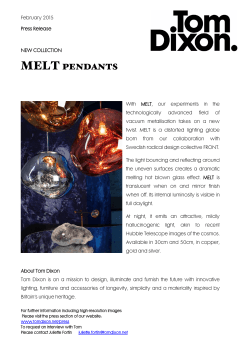
Safety of VVER-1200 V491
Safety of VVER-1200/V491 Application of WENRA Safety Objectives H. Hirsch A. Y. Indradiningrat NURIS 2015 University of Natural Resources and Life Sciences, Vienna 16 – 17 April, 2015 Reactor Type VVER-1200 The VVER-1200 is a third-generation reactor. The first VVERs began operation in the 1960s. Forerunner types include VVER-440/V213 (e.g. Paks 1-4), VVER-1000/V320 (e.g. Temelín 1-2), AES-92 (Kudankulam). There are two variants of the VVER-1200: • VVER-1200/V392M, designed by Atomenergoproekt Moscow, 2 units under construction at the Novovoronezh-2 site • VVER-1200/V491, designed by Atomenergoproekt St. Petersburg, 2 units under construction at the Leningrad-2 site V392M tends to depend more on passive safety systems, V491 more on active safety systems; there are a number of other differences. Construction of a VVER-1200/V491 at Kaliningrad has begun 2012, but is suspended. The type has also been selected for Hanhikivi (Finland), Paks (Hungary and Ostrovets (Belarus). Safety of VVER-1200/V491 Helmut Hirsch & Adhipati Y. Indradiningrat Application of WENRA Safety Objectives on VVER-1200/V491 In the Austrian Expert Statement on Hanhikivi (2014), the WENRA safety objectives of 2010 were applied to the V491. The following points were assessed, with a focus on design aspects: • What can be asserted regarding fulfilment of the safety objectives, on the basis of available information? • Which issues remain unclear regarding fulfilment? • Are there potential challenges which could make fulfilment of the WENRA safety objectives difficult or impossible? The assessment was sufficient to provide a rough overall picture. Generally, it became clear that significant efforts have been undertaken by the designer to fulfil the safety objectives; but available information does not permit a definitive assessment. Many challenges have been identified. Safety of VVER-1200/V491 Helmut Hirsch & Adhipati Y. Indradiningrat Safety of VVER-1200/V491 SO 1: Norm. Operation, Abn. Events • Reducing the frequencies of abnormal events by enhancing plant capability to stay within normal operation. • Reducing the potential for escalation to accident situations by enhancing plant capability to control abnormal events. Challenge: Designer’s approach is “improving system and equipment characteristics by abandoning excessive conservatism and optimizing design margins”. However, larger operational margins are appropriate for reducing the frequency of abnormal events conflict between safety and economics? Challenge: Embrittlement behaviour of reactor pressure vessel over 60 years still requires attention. Safety of VVER-1200/V491 Helmut Hirsch & Adhipati Y. Indradiningrat Safety of VVER-1200/V491 SO 2: Accidents Without Core Melt • Ensuring that accidents without core melt induce no off-site radiological impact or only minor radiological impact (in particular, no necessity of iodine prophylaxis, sheltering nor evacuation). • Reducing, as far as reasonably achievable, -- the core damage frequency taking into account all types of credible hazards and failures and credible combinations of events; -- the releases of radioactive material from all sources. • Providing due consideration to siting and design to reduce the impact of external hazards and malevolent acts. Safety of VVER-1200/V491 Helmut Hirsch & Adhipati Y. Indradiningrat Safety of VVER-1200/V491 SO 2: Accidents Without Core Melt Challenges: • Systematic consideration and controlling of internal hazards; • systematic consideration and controlling of multiple failures; • redundancy of all systems of AC emergency power; • demonstrating the fulfilment of the limit for core damage frequency, taking into account all relevant initiating events, and uncertainties. Safety of VVER-1200/V491 Helmut Hirsch & Adhipati Y. Indradiningrat Safety of VVER-1200/V491 SO 3: Accidents With Core Melt • Reducing potential radioactive releases to the environment from accidents with core melt, also in the long term, by following the qualitative criteria below: -- accidents with core melt which would lead to early or large releases have to be practically eliminated; -- for accidents with core melt that have not been practically eliminated, design provisions have to be taken so that only limited protective measures in area and time are needed for the public (no permanent relocation, no need for emergency evacuation outside the immediate vicinity of the plant, limited sheltering, no long term restrictions in food consumption) and that sufficient time is available to implement these measures. Safety of VVER-1200/V491 Helmut Hirsch & Adhipati Y. Indradiningrat Safety of VVER-1200/V491 SO 3: Accidents With Core Melt Challenges: • There are open questions regarding the reliable function of the “core catcher” – regarding description of accident scenarios, timing of core flooding to avoid steam explosion etc. • A number of hazardous phenomena which can lead to large/early releases are claimed to have been “avoided by design”, which seems to correspond to “practical elimination”. However, there is no explanation of the methodology applied for “avoidance by design”, and no proof that they can in fact be regarded as “practically eliminated”. Safety of VVER-1200/V491 Helmut Hirsch & Adhipati Y. Indradiningrat Core Catcher of VVER-1200/V491 Safety of VVER-1200/V491 Helmut Hirsch & Adhipati Y. Indradiningrat Safety of VVER-1200/V491 SO 4: Independence of DiD Levels Enhancing the effectiveness of the independence between all levels of defence-in-depth, in particular through diversity provisions (in addition to the strengthening of each of these levels separately as addressed in the previous three objectives), to provide as far as reasonably achievable an overall reinforcement of defence-indepth. Challenges: There is a number of important systems foreseen for severe accidents, which are also used on other levels of DiD: The primary depressurization system, and two passive cooling systems. (This is also relevant for SO 3.) Separation of the I&C systems for different levels of DiD is not clear according to available information. Safety of VVER-1200/V491 Helmut Hirsch & Adhipati Y. Indradiningrat Safety of VVER-1200/V491 SO 5: Safety and Security Interfaces Ensuring that safety measures and security measures are designed and implemented in an integrated manner. Synergies between safety and security enhancements should be sought. Challenges: The safety building which houses all four redundant trains of the safety systems, is not designed against airplane crash. The four trains are located side-by-side. No discussion of the possible effects of combustion and/or explosions of aircraft fuel on vital structures and systems can be found in the available documents. Demonstration of availability of the required safety functions after the crash of a large airplane constitutes a challenge. Safety of VVER-1200/V491 Helmut Hirsch & Adhipati Y. Indradiningrat Safety Building Trains Safety of VVER-1200/V491 Helmut Hirsch & Adhipati Y. Indradiningrat Safety of VVER-1200/V491 Safety Objectives 6 and 7 SO 6 concerns radiation protection and waste management. These topics are important, but of little relevance for possible adverse effects on Austria. Therefore, this SO was not deeper discussed in the Expert Statement. SO 7 concerns leadership and management for safety. It goes beyond the design aspects of the plant, and was not discussed in the Expert Statement. Safety of VVER-1200/V491 Helmut Hirsch & Adhipati Y. Indradiningrat Safety of VVER-1200/V491 Are Large Releases Possible? Atomstroyexport claims that the frequency of a large release (LRF) is 1.8x10-8/yr, well below the limit of 10-7/yr. BUT: This published result includes full-power operation and internal initiators only. Low-power and shutdown states can contribute significantly to LRF, as can external events. No indication is given for the uncertainty of this result. Most important: The numerical results of PRA studies should not be taken at face value. PRAs are beset with uncertainties, and cannot completely capture reality. Safety of VVER-1200/V491 Helmut Hirsch & Adhipati Y. Indradiningrat Digression: Shortcomings of Probabilistic Studies The following factors cannot at all, or not adequately, be taken into account in a PRA: • Unexpected loads from internal occurrences • Bad safety culture • Common cause failures • Problems at the interface between civil engineering and systems engineering • Unexpected external events It is inadmissible to exclude accidents in NPPs from further consideration, solely on the basis of PRA results. Safety of VVER-1200/V491 Helmut Hirsch & Adhipati Y. Indradiningrat Conclusion for VVER-1200/V491 Taking into account: The open issues and challenges identified regarding the safety of this reactor type, and in particular The lack of demonstration that accidents with large releases are extremely unlikely, with a high degree of confidence --- severe accidents with large releases cannot be excluded for the VVER-1200/V491, based on information available today. Safety of VVER-1200/V491 Helmut Hirsch & Adhipati Y. Indradiningrat Thank you for your attention! Safety of VVER-1200/V491 Helmut Hirsch & Adhipati Y. Indradiningrat Annex: Main Reference Main basis for this presentation: NPP Fennovoima (Hanhikivi 1) – Expert Statement to the Environmental Impact Assessment Report O. Becker, H. Hirsch, A.Y. Indradiningrat, A. Wallner, 2014 Expert Statement by Order of the Austrian Federal Ministry of Agriculture, Forestry, Environment and Water Management, published at the Website of the Environment Agency Austria http://www.umweltbundesamt.at/fileadmin/site/umweltthemen/u mweltpolitische/ESPOOverfahren/uvp_fennovoima2014/REP_0479 _Hanhikivi_EIA.pdf Safety of VVER-1200/V491 Helmut Hirsch & Adhipati Y. Indradiningrat
© Copyright 2025









